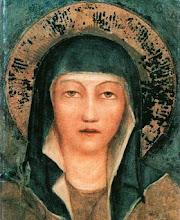
Today is the Feast Day of the Servant of God, Francis J. Parater. I wrote a very extensive reflection on Frank Parater’s Feast Day last year, in which you will also be able to read a short biography of the life of this beautiful saint-in-the-making.
Last year I expressed to you all basically everything I have to tell about my devotion to and love of Frank as well as the profound influence he has played in my spiritual life. However, what makes this year’s feast day especially poignant for me is that I am currently the same age as Frank was when, on February 7th, 1920, he went to meet his Savior. The example of his virtuous life and heroic death prove that being young and saintly are not at all contradictory.
‘Heroic’ is a word that is commonly used to describe Frank’s death. Given the specific criteria that our modern culture has assigned to the term, the heroic nature of Frank’s death is not immediately apparent. Heroic deaths are usually considered to involve an voluntary and extraordinary act of courage in the face of an unusually dangerous war, disaster, or other perilous situation. More often than not, a ‘hero’ dies while attempting to save another person from harm.
How does Frank meet any of these criteria of dying a ‘heroic’ death? He involuntarily came down with a case of rheumatism in the middle of January while he was studying at the North American College Seminary in Rome. Over the next two weeks, Frank’s condition deteriorated and he had to be committed to the local hospital. On Saturday, February 7th, 1920, after receiving Last Rites, Frank died in his hospital bed. Those are at least the basic facts.
Considering all the truly ‘heroic’ ways that young people have died, why does a person whose death was no different from anyone else who simply dies a peaceful death in a hospital deserve to be classified as a ‘hero’? Just because Frank might not be classified as a ‘hero,’ doesn’t mean that he shouldn’t be regarded as a Saint! However, Frank did die heroically and courageously.
A heroic death involves a voluntary and extraordinary act of courage in the face of a perilous situation:
Even though he didn’t die or fight on the battlefield, Frank could be directly compared to the “lost generation” of young men who fought during WWI. These were largely talented and privileged young men whose lives and plans were completely interrupted by the destruction of war. For many of these men whose ideals were shattered by war, life just didn’t make sense.
Similarly, Frank had ‘everything going for him’: he was notably the most popular man in his seminary in Rome, excelled in his courses, was very spiritually deep, and had the potential to do immense good for the Church. Frank was supremely happy with his life in Rome whole he was pursuing his lifelong vocation to be a priest. It simply didn’t make sense as to why God would allow such wonderful plans to be drawn to a halt by a seemingly meaningless death. At only 22 years of age, Frank must have felt great confusion and sadness at this seemingly nonsensical twist of fate. He could have grumbled about the illness and been overcome by despair. However, Frank courageously and voluntarily chose to embrace this suffering as part of God’s overall plan. Indeed, Frank realized that even though most forms of suffering don’t make the least bit of sense, we can still actively choose to unite our sufferings with the passion of Our Lord. One of the wonderful things about Christianity is that through a redemptive act of love, our God encountered the same mental and physical sufferings that humans undergo; even though death initially appeared to triumph over Him, God ultimately claimed the victory. Through God’s grace, we too are allowed to participate in Christ’s redemptive act of hope triumphing over despair by means of offering up our sufferings with Him.
A ‘heroic death’ involves someone dying while attempting to save another person from harm:
Frank didn’t die while trying to save a baby from a burning house, or he didn’t expire trying to escape from a mine field while carrying a soldier on his back. However, he did write the following ‘Last Will and Testament’ two months prior to his death and while in perfect health:
I have nothing to leave or give but my life and this I have consecrated to the Sacred Heart to be used as He wills. I have offered my all for the conversion of non-Catholics in Virginia. This is what I live for and in case of death what I die for:…Since my childhood I have wanted to die for God and my neighbor. Shall I have this grace? I do not know, but if I go on living, I shall live for this same purpose; every action of my life here is offered for the spread and success of the Catholic Church in Virginia…I shall be of more service to my diocese in Heaven than I can ever be on earth.
The intense pain that Frank suffered the following January was not in vain. Frank intuitively realized that by making the above ‘Act of Oblation,’ he was sharing in the redemptive work of Christ by lovingly offering up his future sufferings in order to help others, namely the conversion of non-Catholics in Virginia. As you may have read in last year’s blog post, Frank’s intercession in Heaven has certainly been quite powerful in having me return to the Catholic Church!
At age 22, a lot of things don’t make sense….just like many people of Frank’s ‘lost generation’, ideals have been built up and are often torn down by acts of violence and destruction. It is often easy for us young people to adopt an attitude of despair once we begin to notice all of the suffering that takes place in the world. However, Frank is a ‘hero’ for young people because he shows us how to suffer with hope, faith, and love. Frank shows us that to be a hero, we need not rush into battle but rather prayerfully unite our sufferings with the sufferings of Christ. Frank teaches us that being a ‘hero’ to another person doesn’t always mean that we need to physically save their life….it doesn’t even necessitate that we have to know him or her. However, it does mean that we must have a willingness to make a spiritual sacrifice for that person (e.g., a specific friend who is sick), a group of people (e.g.., those discerning the religious life), or a particular cause (e.g., an end to abortion).
In closing, I hope that the Servant of God Frank Parater’s intercession may work for you in your life. I will leave you with a brief quote from one of his letters:
Pray hard for your boy. The path God has destined me to walk glistens before me like the shimmering path of moonbeams on the water. But how many pitfalls, briars, and thorns have been hidden along that way. Beg God to give me the grace of one thing - 'to do His will perfectly.' That alone is enough. However hard the cross may be, however rough the way, I know it is God's will and I shall have grace to persevere until the end. 'Thy Will be done,' beg the Cor Jesu to give me the grace to make it my motto, the standard of my life. And then whether I die within the year or live to a ripe old age, I shall die happily and willingly, praising the Lord.
(Letter to Mother, February 11, 1919)















